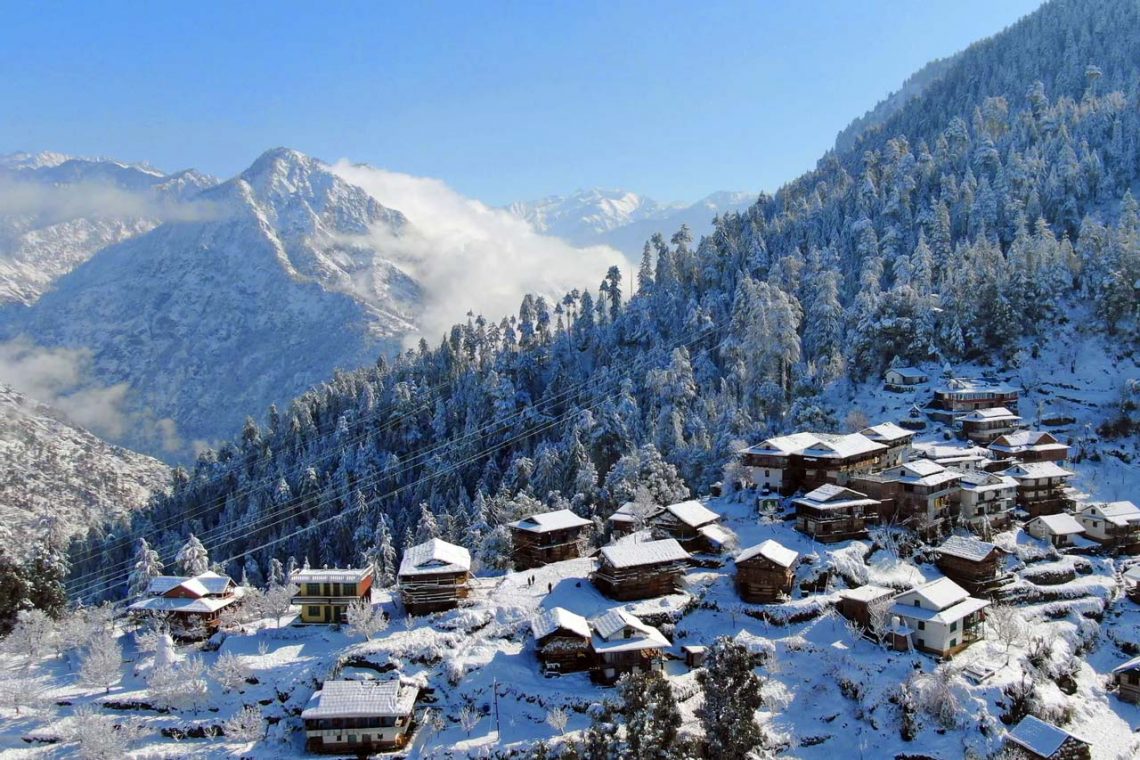India, a land of extremes and contrasts, offers an unparalleled travel experience that caters to every kind of traveler. From the snow-capped peaks of the Himalayas to the sun-drenched beaches of Goa and the serene backwaters of Kerala, the country’s diverse landscapes and cultural richness make it a destination that never disappoints. However, the best time to visit India depends on your interests, whether you’re seeking adventure, cultural immersion, or simply a tropical getaway.
Winter: A Magical Time for Northern India
January is one of the driest months in India, making it an ideal time to explore the northern regions. The cold weather in the foothills of the Himalayas creates a magical atmosphere, perfect for hiking through snow-dusted trails or visiting spiritual sites like Dharmsala and Rishikesh. For those who prefer warmer climates, the golden beaches of Goa and the palm-fringed backwaters of Kerala offer a delightful escape from the chill.
During this period, the northern plains are at their most comfortable, with mild temperatures that allow for easy exploration of cities like Delhi, Agra, and Jaipur. The winter months also coincide with several festivals, including Republic Day on January 26, which features vibrant parades and military displays. Additionally, the Hindu festival of Sankranti and the Tibetan New Year (Losar) bring unique cultural experiences to the region.
Summer: The Monsoon Season and High-Altitude Adventures
From June to September, India experiences the monsoon season, which brings heavy rainfall to the plains. While this might not be ideal for beachgoers, it’s a fantastic time for exploring the high-altitude regions of Ladakh. The dry mountain valleys become lush and green, offering breathtaking trekking opportunities. The cooler temperatures and fewer tourists make this a great time for adventure enthusiasts.
The monsoon season also coincides with several festivals, such as the Rath Yatra in Puri, where massive chariots carry deities through the streets, and the boat races in Kerala, which are a spectacular sight. August is particularly busy with events like Independence Day celebrations and the Ganesh Chaturthi festival, where idols of Lord Ganesha are immersed in water bodies.
Spring and Autumn: Perfect Weather for Exploration

April to June is considered the low season in many parts of India, with soaring temperatures in the plains. However, this is an excellent time to visit the hill stations, where the cooler climate offers respite from the heat. Cities like Shimla, Mussoorie, and Ooty are popular destinations during this period, providing a refreshing escape for travelers.
Autumn, from October to November, is another prime time to visit India. The skies are clear, and the weather is pleasant, making it ideal for exploring both the northern and southern regions. This period also marks the start of the trekking season in the Himalayas, with many travelers flocking to areas like Manali and Leh for adventure activities.
Festivals: A Cultural Experience
India’s festival calendar is packed with vibrant events throughout the year. From the colorful Holi festival in late February or March to the grand celebrations of Diwali, there’s always something happening. The Hindu festival of Navratri and Durga Puja, celebrated in West Bengal and other parts of the country, are particularly lively, featuring dance performances and elaborate decorations.
For those interested in religious and cultural experiences, the Buddhist festivals in Ladakh, such as Hemis Tsechu, offer a glimpse into the region’s rich heritage. Similarly, the Sikh festival of Vaisakhi and the Muslim celebrations of Eid al-Fitr provide unique insights into the diverse traditions of India.
Planning Your Trip: Expert Advice
According to travel experts James Jayasundera of Ampersand Travel and Sanjay Saxena of Nomadic Expeditions, the best time to visit India depends on your interests. “The best time to visit India is when you have the time,” says Jayasundera. “Given the country’s size, there’s always a part of India that’s ripe for visiting, with good weather or cultural events to experience.”
Saxena adds that the months of March through June are ideal for wildlife safaris in national parks like Kanha and Bandhavgarh, while mid-August through October is a great time to visit northern India, particularly Rajasthan, for its lush landscapes and crowd-free attractions.
Conclusion
India is a destination that offers something for everyone, no matter the time of year. Whether you’re drawn to the snowy peaks of the Himalayas, the warm beaches of Goa, or the vibrant festivals across the country, there’s always a reason to visit. By understanding the different seasons and their unique offerings, travelers can plan their trips to make the most of their time in this incredible country.




